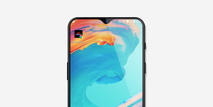Thu, Apr 14, 2022
What is Beacon Technology?

Have you ever heard of beacons? These Bluetooth-based sensors offer interesting opportunities in terms of geo-marketing but they are often misunderstood or underestimated. Whether it's for a point of sale, a guided tour or a museum, they allow you to interact with a visitor using the mobile device without using wifi or GPS.
What is a Beacon?
A Beacon is a small physical device that uses the Bluetooth Low Energy (BLE) connection. The beacon sends signals at regular intervals that are read in real time by a smartphone or tablet when it arrives near the beacons. It is thus possible to send a push notification or trigger an action on the visitor's device. Apple was the first to develop this technology in 2013.
Beacon sensors are part of the geolocation technologies used by marketing experts to target users in an established geographical area and deliver content based on their location.
Are you confusing beacons with bitcoin, iBeacon or bacon? Bitcoin is a cryptocurrency, iBeacon is a type of beacon specific to iOS (you're not that far off) and bacon, that slice of salty bacon, is probably a sign that you're hungry!
Benefits of Beacon Bluetooth technology
The main strength of Beacon technology is that it is affordable. It costs between €10 and €30 per beacon, which makes it accessible for small and large structures.
Available offline, Beacon sensors are used as indoor positioning devices where they are no internet connection, such as a museum or a store. Only the Bluetooth connection of the device is required.
Each beacon can cover a wide field from a few centimeters up to 450 m, depending on the device, as opposed to NFC (Near Field Communication) which limits the exchange between devices to a distance of about 10 cm. It is possible to estimate the distance to the beacon by comparing the signal level they receive (RSSI) with a reference level.
In terms of compatibility, it works with any iOS, Android and Windows device!
The beacon uses the Bluetooth Low Energy standard, a version of Bluetooth that is much more energy efficient to preserve power consumption and battery life. Your equipment can be used for several years!
Now it's easy and no line of code is required to create a mobile application that interacts with these sensors. Our tool PandaSuite allows you to create your custom mobile application and associate its own sensors to automatically trigger actions based on the position of the visitor.
Limits of Beacon technology
You need to understand how Beacon technology works to understand its limitations.
Beacons do not work by themselves: they require a mobile app. So the visitor must have downloaded the mobile application beforehand for the beacon to work, it is not "magic".
The user must also have enabled Bluetooth on his device and accepted this service to receive these notifications. In order for the user to accept and positively perceive this prerequisite, we recommend to clearly present the stakes and benefits: "Enjoy a unique experience by receiving personalized information based on where you are".
Moreover, the Beacon technology relies on signals: the intensity of these signals can be different according to the thickness of the walls or possible obstacles on their way. It is therefore essential to conduct a phase of serious testing and field to take into account these specificities.
Where to buy Beacon beacons?
https://kontakt.io/, Estimote, Radbeacons... there are many manufacturers of Beacon sensors that you can find on the Internet. The difference between these different equipments is generally in the autonomy and the range of these beacons.

There are several communication protocols for these beacons: Eddystone (Google), AltBeacon and iBeacon (Apple). Concretely, they define the format of the signals emitted by these sensors.
If you want to use your beacons with a mobile application made with PandaSuite, make sure your sensors are Eddystone compatible. We chose Eddystone because it offers the best cross-platform compatibility (iOS and Android).
Use cases
Apple was the first to deploy its iBeacons in Apple Stores.
In stores, airports, museums, businesses, many brands are now using this technology to offer their customers a geo-localized journey and a personalized user experience.
At PandaSuite, we mainly see Beacon sensors used in these situations:
- To accompany the visitor during an exhibition or during the discovery of a cultural place
- To facilitate the visit of an industrial site in complete autonomy
- For employees within a company
➜ Best Use Cases for Beacon Technology
Alternatives to Beacon sensors
If you are interested in geolocation technologies, we also recommend you to discover these technologies:
- Geo-fencing via GPS
- Image recognition: it's not a location-based technique but by scanning an image placed at a location, you allow the user to access a specific content
Create an application + Beacon
Now that you understand the principle and the technology, it's time to get practical.
Check out this tutorial to learn how to use Beacons with PandaSuite: Beacon tutorial. Don't forget to have fun!


